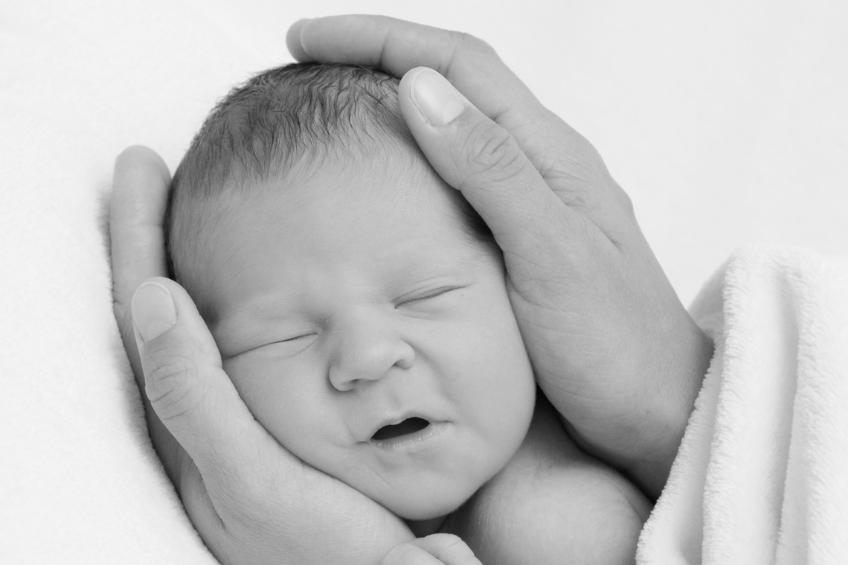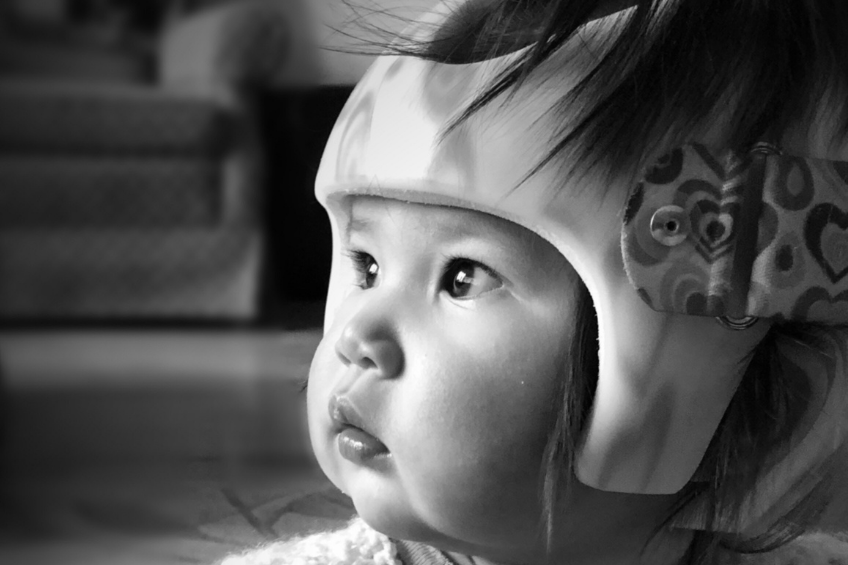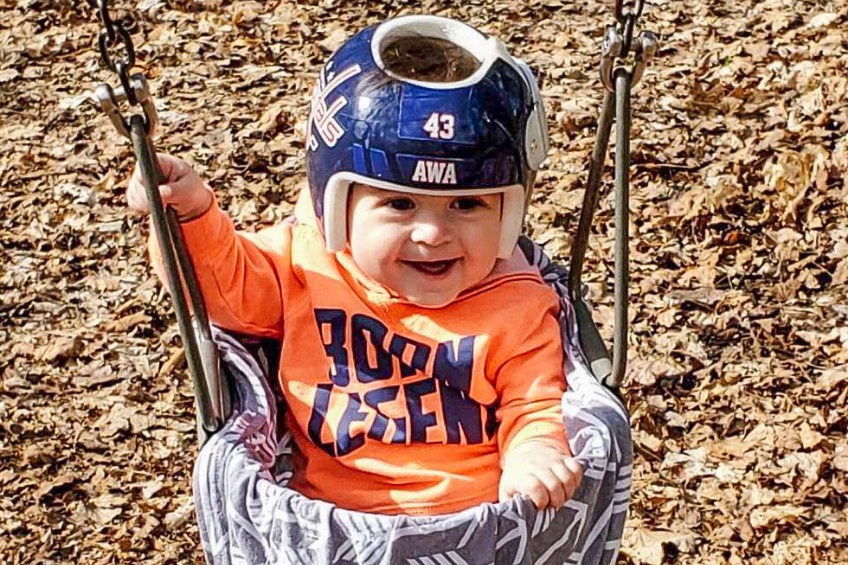Learning From Japan How To Effectively Treat Plagiocephaly
/
It’s important for parents who are speculating whether or not to treat plagiocephaly to get clarity on how effective flat head therapy really is by reviewing credible medical journals and case studies. Anyone can make a claim that a pillow or mattress pad has worked wonders in treating their baby’s flat head, but in all honesty what does that mean for you and your newborn? All you want to know will manual or helmet therapy help treat my baby’s flat head. It’s no easy feat to keep a helmet on your baby’s head for 23 hours a day. You as a parent need to be reassured from a clinical point of view that plagiocephaly treatment will work and provide your baby with a normal and most importantly adorable head shape.

The National Center for Biotechnology Information is part of the United States National Library of Medicine, a branch of the National Institutes of Health or better known as The NCBI for short. The NCBI is federally funded and will only publish case studies that are completed by reputable worldwide clinicians. Many doctors and hospitals will publish their findings as a white paper or case study but only the best will be published by The NCBI. With that introduction we will be reviewing a case study titled Evaluation of the Molding Helmet Therapy for Japanese Infants with Deformational Plagiocephaly.
Where Was The Study Done & Who Was Part Of It?
The case study was performed at The National Center for Child Health and Development, Tokyo, Japan. The number of participants in the study was a total of 387 babies of which 273 boys and 114 were girls. The average age was 4.7 months, which is the ideal time to treat positional plagiocephaly or more commonly known as flat head syndrome. Each of the participants visited the Clinic for Baby’s Head Shape, which included having orthotists provide helmet therapies that were overseen by clinicians. Healthcare is slightly different in Japan for orthotists in that a treatment regimen has to be overseen by a doctor. Here in the United States physical therapists have the luxury of executing the treatment without anyone overseeing them. That’s why it’s important to know that you are at a reputable cranial center when treating flat head syndrome.
In Short What Were The Results of The Case Study?
In order to understand the results of the case study it’s important to understand the parameters of what’s a normal head shape and what’s not. A normal head shape would be defined as a head shape having a cranial asymmetry of 5 mm or less. Therefore if a parent wants to know if their baby’s head shape is normal, it really depends on what you call normal. As per this case study we refer to baby head shape within 5 mm as normal.

Out of the 387 babies 159 of them completed the plagiocephaly treatment and had statistically significant improvement from a 16.33 mm cranial asymmetry to 7.7 mm on average. That is more than a 100% effectiveness on average and the method of treatment was introduced to the clinical setting in Japan. If you are a first time parent, the above case study conducted in Japan was very effective in treating plagiocephaly or better known as flat head baby syndrome. There are many studies out there but this one is more recent as it was published in the past year.
Why Is Flat Head Baby Syndrome Prevalent In Asian Countries
According to the case study conducted in collaboration with The National Center for Child Health and Development, Tokyo, Japan, the Japanese people have been traditionally putting their babies to sleep on their backs and that has been the cause of deformed plagiocephaly. Unsure of what exactly their motivation is, it seemingly sounds similar to the Back To Sleep campaign, introduced in the late 1990’s. It’s not just limited to the societies of Japan and the USA, many parents all around the world have accepted the practice of putting their babies to sleep on their back. The result of this meant an increase of babies with positional plagiocephaly throughout the globe. Some were lucky to receive treatment and fix the poor shaped head but most people around the world unfortunately are unaware that their baby’s head could be fixed through cranial therapy.
Sharing Pictures Of Babies In Cranial Helmets Can Help Spread Awareness
There are many moms out there that don’t want to share pictures of their baby in a cranial helmet. People are afraid of the response they will get from friends and family or are simply camera shy and that resonates amongst their children too. However, no one will ever know how far their picture may get by adding a hashtag to their social media post of their baby wearing a helmet to treat flat head baby syndrome. Perhaps it will reach a mother in the Philippines looking for a way to fix her baby’s flat head. She was probably told over a thousand times by her family and close relatives that this condition runs in the family. People around the world unfortunately accept answers like that and are unaware that there are cranial therapy clinics all around the world that can execute an effective treatment plan for a flat spot on a baby’s head. It’s very important for parents to share their success stories of how helmet therapy helped reshape their baby’s future.

Through spreading plagiocephaly awareness parents all around the world are becoming mindful of what a normal head shape should look like and if it does not look right it could be fixed. Though a poor head shape is labeled as a cosmetic issue (which is a claim why some medical insurance won’t cover) it can have a long-term effect on your child’s confidence as they grow older.
Crying & Calming During Helmet Therapy
One of the main reasons why helmet therapy does not correct a baby’s head deformity the way it should is because the parents have become exhausted from hearing their newborn cry during the first few weeks of therapy. No one wants to place an orthotic device on their child’s head but parents have to figure out a way to calm their baby down during the initial stages of getting used to it. Always be sure to check for skin irritation or rashes that can be treated during the therapy. The baby should not be in pain and if there is reason for concern make sure to contact your pediatrician and let them know what’s going on. Sometimes it’s not the actual fit of the helmet that causes the discomfort but rather the heavy sweating from the body heat that cannot fully escape through the head. Keep in mind that all cranial helmets should have a significant size hole at the top of the crown. Unfortunately the bigger the hole the less effective the treatment which is why reputable orthotics in the United States prefer STARband as opposed to DOC Band®. Parents of babies that perspire more than usual need to make certain that the room where the baby is sleeping in is nice and cool no matter what the season. It’s often the sweating that causes the skin irritation and the rash. If parents can find a way to keep their baby cool during helmet therapy it can improve their sleeping habits.

Calming your baby down during the first few weeks is going to be the best medicine assuming there is no underlying skin irritations or rash. Once your baby has graduated cranial therapy the days of them twisting and turning will be forgotten. As a side note the best way for flat spot prevention is to have your baby rotate their head every few hours during their sleep. This will allow the even dispersion of weight and not overwhelm one part of the head which can result in plagiocephaly.
Final Words
Prior to going into any type of treatment it’s important that as a parent you gain the facts from credible sources. This does not mean a claim of flat head treatment or prevention is untrue, it just means it has not yet been verified. For your child, you need a reliable source that will only promote a treatment regimen if it was tested and tried for effectiveness. For example, the case study published by the NCBI, has proven that treating plagiocephaly via helmet therapy is very effective in getting the head back to a normal shape. If you do choose to have your baby evaluated for flat head therapy make sure to use a provider which is recommended by your pediatrician. Sometimes doctors will not make a big deal about something which is cosmetic but you as a parent need to know what is best for your child. There will be a day when your child will thank you for their beautiful head shape when they notice one of their friends with an odd shaped looking head. That could have been your son or daughter.

Cranial Therapy Centers is the only early interventions cranial center in the United States which provides both helmet and manual therapy treatment. We are American Board for Certification in Orthotics, Prosthetics and Pedorthics Facility. Visit us in Lakewood NJ, at 1352 River Ave Unit 14, Lakewood NJ, 08701 or in Teaneck NJ at 1086 Teaneck Road Suite 3F, Teaneck, NJ 07666. You can also email us info@cranialtherapycenters.com
